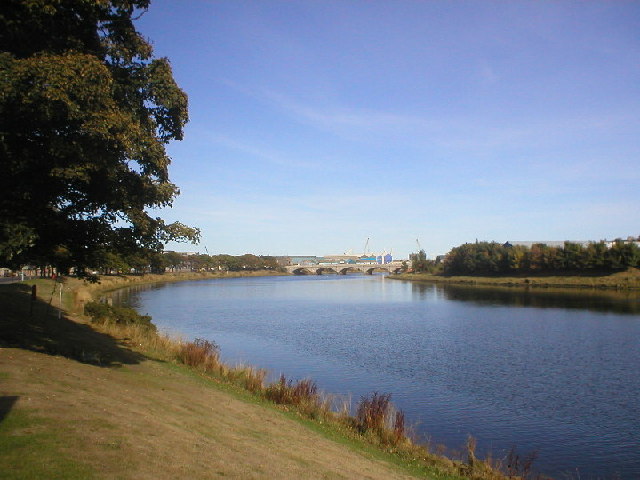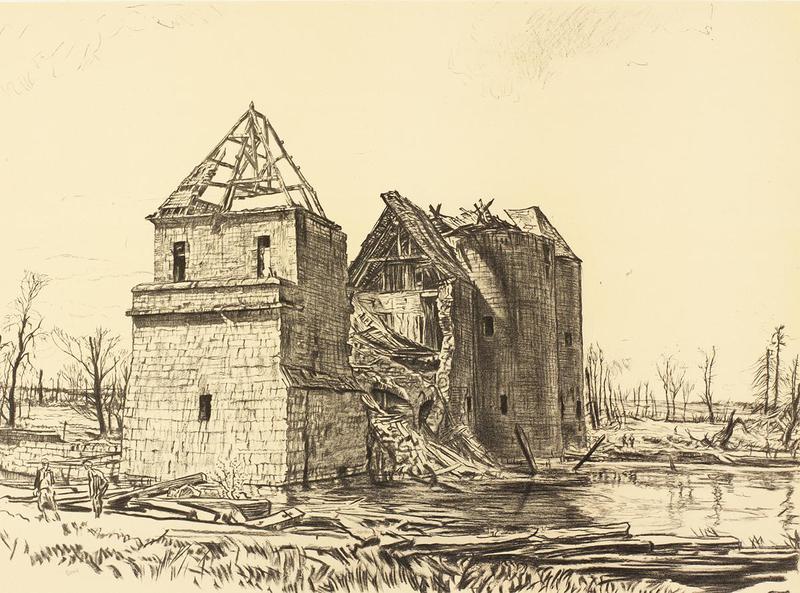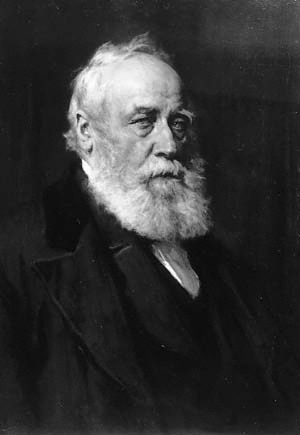|
1876 In Scotland
Events from the year 1876 in Scotland. Incumbents Law officers * Lord Advocate – Edward Strathearn Gordon until July; then William Watson * Solicitor General for Scotland – William Watson; then John Macdonald Judiciary * Lord President of the Court of Session and Lord Justice General – Lord Glencorse * Lord Justice Clerk – Lord Moncreiff Events * 14 February – Alexander Graham Bell files a patent for the telephone in the United States. * 19 February – Partick Thistle F.C. play their first match. * 5 April – River Dee Ferry Boat Disaster: 32 drown. * 18 June – promenade on the roof of Waverley Market opens in Edinburgh; this year also West Princes Street Gardens pass to the city's council as a public park. * 17 October – St Enoch railway station officially opens in Glasgow. * 3 November – McLean Museum opens in Greenock. * William Forbes Skene's ''Celtic Scotland: a History of Ancient Alban'' begins publication in Edinburgh. * Camp Coffee is firs ... [...More Info...] [...Related Items...] OR: [Wikipedia] [Google] [Baidu] |
Scotland
Scotland (, ) is a country that is part of the United Kingdom. Covering the northern third of the island of Great Britain, mainland Scotland has a border with England to the southeast and is otherwise surrounded by the Atlantic Ocean to the north and west, the North Sea to the northeast and east, and the Irish Sea to the south. It also contains more than 790 islands, principally in the archipelagos of the Hebrides and the Northern Isles. Most of the population, including the capital Edinburgh, is concentrated in the Central Belt—the plain between the Scottish Highlands and the Southern Uplands—in the Scottish Lowlands. Scotland is divided into 32 administrative subdivisions or local authorities, known as council areas. Glasgow City is the largest council area in terms of population, with Highland being the largest in terms of area. Limited self-governing power, covering matters such as education, social services and roads and transportation, is devolved from the Scott ... [...More Info...] [...Related Items...] OR: [Wikipedia] [Google] [Baidu] |
River Dee Ferry Boat Disaster
The River Dee Ferry Boat Disaster occurred on 5 April 1876. Thirty two people drowned in the mouth of the River Dee, Aberdeenshire, Scotland when their ferry boat capsized. Overcrowding, fast flowing current and a poorly spliced wire rope were blamed. Context The city of Aberdeen lies at the mouth of the River Dee in North East Scotland. This is a tidal part of the river and can be subject to powerful currents. In 1876 the Royal Burgh of Torry was distinct from Aberdeen and was found on the south bank of the river. Aberdeen lay on the north bank. In 1891 Torry was incorporated into the city of Aberdeen. The ferry route was a busy and profitable route between the Pocra Quay on the North and Torry on the south. It had operated for centuries. At the time of the accident, the big ferry boat was operated by a pulley system, attached by a rope to each river bank. This allowed it to be pulled across the river without the need for an engine, sails or rudder on the boat. Ot ... [...More Info...] [...Related Items...] OR: [Wikipedia] [Google] [Baidu] |
1953 In The United Kingdom
Events from the year 1953 in the United Kingdom. This is the year of the coronation of Queen Elizabeth II and the North Sea flood. Incumbents * Monarch – Elizabeth II * Prime Minister – Winston Churchill (Conservative) *Parliament – 40th Events * 28 January – Nineteen-year old Derek Bentley is hanged at Wandsworth Prison in London for his part in the murder of PC Sidney Miles. * 31 January – Car ferry , sailing from Stranraer, Scotland, to Larne, Northern Ireland, sinks in the Irish Sea killing 133 people on board. Among the dead are: Northern Ireland Finance Minister and Deputy Prime Minister Major Maynard Sinclair, and Sir Walter Smiles, the Ulster Unionist MP for North Down. * 31 January–1 February – The North Sea flood of 1953 kills 307 people on the east coast of Britain, with more at sea. A corvette and a submarine sink at their moorings in HM Dockyard Sheerness. * 1 February – Pool petrol, introduced during World War II, is replaced by individual ... [...More Info...] [...Related Items...] OR: [Wikipedia] [Google] [Baidu] |
Muirhead Bone
Sir Muirhead Bone (23 March 1876 – 21 October 1953) was a Scottish etcher and watercolourist who became known for his depiction of industrial and architectural subjects and his work as a war artist in both the First and Second World Wars. A figure in the last generation of the Etching Revival, Bone's early large and heavily-worked architectural subjects fetched extremely high prices before the Wall Street Crash of 1929 deflated the collectors' market. He was well known, if not notorious, for publishing large numbers of different states of etchings, encouraging collectors to buy several impressions. Bone was an active member of both the British War Memorials Committee in the First World War and the War Artists' Advisory Committee in the Second World War. He promoted the work of many young artists and served as a Trustee of the Tate Gallery, the National Gallery, and the Imperial War Museum. Early life Muirhead Bone was born in Partick, Glasgow. His parents were journalist Dav ... [...More Info...] [...Related Items...] OR: [Wikipedia] [Google] [Baidu] |
23 March
Events Pre-1600 *1400 – The Trần dynasty of Vietnam is deposed, after one hundred and seventy-five years of rule, by Hồ Quý Ly, a court official. *1540 – Waltham Abbey is surrendered to King Henry VIII of England; the last religious community to be closed during the Dissolution of the Monasteries. *1568 – The Peace of Longjumeau is signed, ending the second phase of the French Wars of Religion. 1601–1900 *1775 – American Revolutionary War: Patrick Henry delivers his speech – " Give me liberty, or give me death!" – at St. John's Episcopal Church, Richmond, Virginia. * 1801 – Tsar Paul I of Russia is struck with a sword, then strangled, and finally trampled to death inside his bedroom at St. Michael's Castle. *1806 – After traveling through the Louisiana Purchase and reaching the Pacific Ocean, explorers Lewis and Clark and their "Corps of Discovery" begin their arduous journey home. *1821 – Greek War of Independenc ... [...More Info...] [...Related Items...] OR: [Wikipedia] [Google] [Baidu] |
Camp Coffee
Camp Coffee is a concentrated syrup which is flavoured with coffee and chicory, first produced in 1876 by Paterson & Sons Ltd, in Glasgow. In 1974, Dennis Jenks merged his business with Paterson to form Paterson Jenks plc. In 1984, Paterson Jenks plc was bought by McCormick & Company. McCormick UK Ltd assimilated Paterson Jenks into the Schwartz brand. Camp is now produced in Paisley, Renfrewshire. Description The current ingredients of Camp Chicory & Coffee are sugar, water, chicory extract (25%) and dried coffee extract (4%). Camp is a dark brown, syrupy liquid. It has a smooth flavour of chicory and coffee but with a very sweet, predominantly chicory aftertaste. Camp is generally used by mixing with hot water or with warm milk in much the same way as cocoa, or added to cold milk and ice to make iced coffee. It is commonly found in the baking aisles of supermarkets because it is also used as an ingredient in coffee cakes and other confectionery. History Camp Coffee w ... [...More Info...] [...Related Items...] OR: [Wikipedia] [Google] [Baidu] |
William Forbes Skene
William Forbes Skene Writer to the Signet, WS FRSE Society of Antiquaries of Scotland, FSA(Scot) Doctor of Civil Law, DCL Legum Doctor, LLD (7 June 1809 – 29 August 1892), was a Scotland, Scottish lawyer, historian and antiquary. He co-founded the Scottish legal firm Skene Edwards which was prominent throughout the 20th century but disappeared in 2008 when it merged with Morton Fraser. Life He was born in Inverey, the second son of Sir Walter Scott's friend, James Skene (1775–1864), of Rubislaw, near Aberdeen, and his wife, Jane Forbes, daughter of Sir William Forbes, 6th Baronet of Pitsligo. The family moved to Edinburgh in 1817, originally living with his uncle, Andrew Skene then from 1820 living at 126 Princes Street facing Edinburgh Castle.Edinburgh Post Office Directory 1820 He was educated at the Royal High School, Edinburgh, High School in Edinburgh. He was then apprenticed as a lawyer first to Francis Wilson WS at Parliament Square then to Henry Jardine WS also ... [...More Info...] [...Related Items...] OR: [Wikipedia] [Google] [Baidu] |
Greenock
Greenock (; sco, Greenock; gd, Grianaig, ) is a town and administrative centre in the Inverclyde council areas of Scotland, council area in Scotland, United Kingdom and a former burgh of barony, burgh within the Counties of Scotland, historic county of Renfrewshire (historic), Renfrewshire, located in the west central Lowlands of Scotland. It forms part of a contiguous urban area with Gourock to the west and Port Glasgow to the east. The United Kingdom Census 2011, 2011 UK Census showed that Greenock had a population of 44,248, a decrease from the 46,861 recorded in the United Kingdom Census 2001, 2001 UK Census. It lies on the south bank of the Clyde at the "Tail of the Bank" where the River Clyde deepens into the Firth of Clyde. History Name Place-name scholar William J. Watson wrote that "Greenock is well known in Gaelic as Grianáig, dative of grianág, a sunny knoll". The Scottish Gaelic place-name ''Grianaig'' is relatively common, with another (Greenock) near Calla ... [...More Info...] [...Related Items...] OR: [Wikipedia] [Google] [Baidu] |
McLean Museum
The McLean Museum and Art Gallery (now officially the Watt Institution) is a museum and art gallery situated in Greenock, Inverclyde, Scotland. It is the main museum in the Inverclyde area, it is free to visit and was opened in 1876. Most notably it features an exhibition of items related to James Watt, the Greenock-born inventor, a Mummy Cartonnage from Herakleopolis Magna and a collection of British and Scottish art. The principal entrance to the museum is on Kelly Street, in the Greenock West area. The forme4r Curator is Val Boa. The Watt Institution includes the Art Gallery, Watt Hall, Watt Library and Inverclyde Archives. History The Museum owes its origins to the Greenock Philosophical Society's burgeoning collection of artificial and natural curiosities which became a museum in 1816 as branch of the Society, housed in the Greenock library. When the Greenock Library changed location to the Watt Library, Society members added "autographs, maps, prints, coins, medals, and ar ... [...More Info...] [...Related Items...] OR: [Wikipedia] [Google] [Baidu] |
3 November
Events Pre-1600 * 361 – Emperor Constantius II dies of a fever at Mopsuestia in Cilicia; on his deathbed he is Baptism, baptised and declares his cousin Julian the Apostate, Julian rightful successor. *1333 – The Arno, River Arno floods causing massive damage in Florence as recorded by the Florentine chronicler Giovanni Villani. *1468 – Liège is sacked by Charles I, Duke of Burgundy, Charles I of Burgundy's troops. *1492 – Peace of Etaples between Henry VII of England and Charles VIII of France. *1493 – Christopher Columbus first sights the island of Dominica in the Caribbean Sea. *1534 – English Parliament passes Acts of Supremacy, the first Act of Supremacy, making King Henry VIII of England, Henry VIII head of the Anglican Church, supplanting the pope and the Roman Catholic Church. 1601–1900 *1783 – The American Continental Army is disbanded. *1793 – French playwright, journalist and feminist Olympe de Gouges is guillotined. ... [...More Info...] [...Related Items...] OR: [Wikipedia] [Google] [Baidu] |
St Enoch Railway Station
St Enoch station was a mainline railway station in the city of Glasgow, Scotland between 1876 and 1966. The hotel was the first building in Glasgow to be fitted out with electric lighting. The station was demolished in 1977. History Located on St Enoch Square in the city centre, it was opened by the City of Glasgow Union Railway in 1876.Butt (1995), page 103Thomas (1971) The first passenger train stopped there on 1 May 1876 and the official opening took place on 17 October 1876. In 1883 it was taken over by the Glasgow and South Western Railway (G&SWR) and it became their headquarters. Services ran to most parts of the G&SWR system, including , , , and . In partnership with the Midland Railway, through services also ran to England, using the Settle and Carlisle Railway from Carlisle to , , and ; the so-called Thames-Clyde route. It was the site of a rail crash in 1903 in which 16 passengers were killed and 64 injured when a train overran the buffers. In the 1923 grou ... [...More Info...] [...Related Items...] OR: [Wikipedia] [Google] [Baidu] |
17 October
Events Pre-1600 * 690 – Empress Wu Zetian Wu Zetian (17 February 624 – 16 December 705), personal name Wu Zhao, was the ''de facto'' ruler of the Tang dynasty from 665 to 705, ruling first through others and then (from 690) in her own right. From 665 to 690, she was first empres ... establishes the Zhou dynasty (690–705), Zhou Dynasty of China. *1091 – London tornado of 1091: A tornado thought to be of strength T8/F4 strikes the heart of London. *1346 – The English capture David II of Scotland, King David II of Scotland at Battle of Neville's Cross, Neville's Cross and imprison him for eleven years. *1448 – An Ottoman army defeats a Hungarian army at the Battle of Kosovo (1448), Second Battle of Kosovo. *1456 – The University of Greifswald is established as the second oldest university in northern Europe. *1534 – Affair of the Placards, Anti-Catholic posters appear in Paris and other cities supporting Huldrych Zwingli's positio ... [...More Info...] [...Related Items...] OR: [Wikipedia] [Google] [Baidu] |




.jpg)


